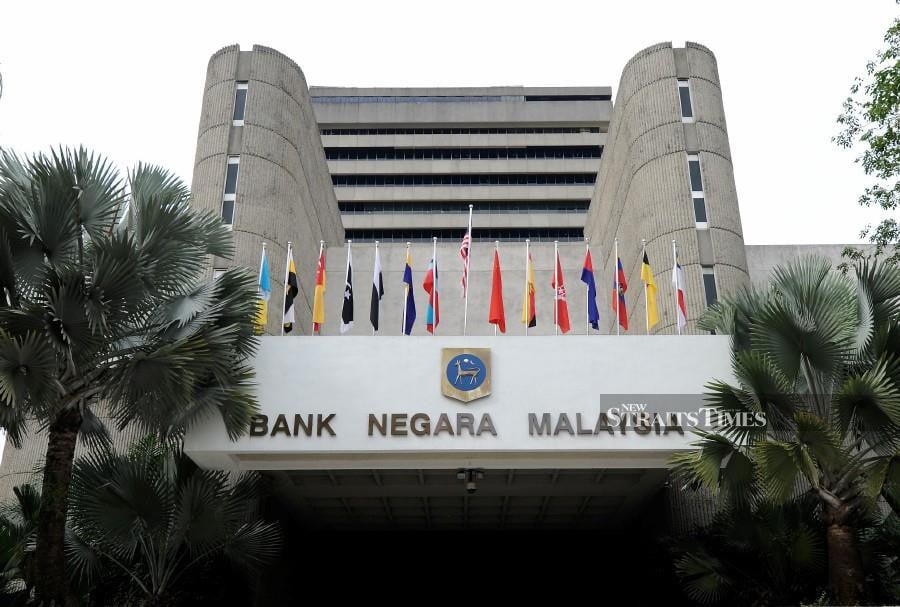
Published by New Straits Times, image from New Straits Times.
RECENT developments have seen Bank Negara allowing Malaysian Government Securities (MGS) and Malaysian Government Investment Issues (MGII) to be used by commercial banks to meet the statutory reserve requirement (SRR) compliance.
Relaxation of the rules means that there are more reserves available for lending activities in the inter-bank market or the Kuala Lumpur Inter-Bank Offered Rate (KLIBOR), helping to enhance liquidity in the financial system. The government should go a step further.
The role of Bank Negara Monetary Notes (BNMN) in liquidity management is crucial in this regard. BNMNs are short-term public sector bonds issued by Bank Negara to replace the Bank Negara Bills, as a monetary instrument to absorb excess liquidity in the financial system.
What this means is BNMNs, as monetary policy, would be influencing the size of issuance and hence indirectly playing a role in moderating and regulating the size of government debt, and by extension, indirectly influencing government’s deficit decision, as fiscal policy.
The issuance of BNMN would serve as the “first wave” of liquidity management to be supplemented by the issuance of MGS. Going forward, MGS would serve as the “second wave” when market pricing-in of expectations and future movements indicates an appetite for additional public sector debt.
For example, a new batch of BNMN issued by Bank Negara could be conceived in an attempt at selling to “drain” liquidity from the financial system. This is because the downward pressure on the target interest rate resulting from intense inter-bank lending as indexed to KLIBOR.
The target interest rate is reflected by the Overnight Policy Rate (OPR). The issuance of BNMN, therefore, would act as the primary wave of liquidity management to “mop up” excess reserves from the financial system.
At the same time, it would also serve as indicator of market sentiment and appetite for MGS, whether demand for BNMN outpaces supply or the other way round and to what extent. If the former, the intense shifting of deposits from payer to payee banks would be accompanied by inflationary pressures in the real economy.
This may be a sign that the government may need to moderate its spending levels. The MOF-issued MGS would then be the subsequent or secondary wave in response to market forces transmitted in the form of the purchases of BNMN.
The cooling down can be by reducing fiscal deficit (fiscal policy) alongside sucking out cash out of the economy through selling of MGS to mop up the excesses (monetary policy). To reiterate, it is important to note issuance of MGS, therefore, is not just limited to raising funds by way of borrowing, but equally significant also is the role of government debt in soaking up “additional” cash from circulation.
This is especially apt if, for example, the funds for fiscal injection were not from government borrowings (i.e. from the private sector or the economy) but intrinsic government reserves.
In our case, we are only borrowing RM45 billion for direct fiscal injection out of the RM295 billion in stimulus packages. All in all, our total direct fiscal injection corresponds to about 3 percent of GDP at most. With the latest rate of unemployment rising to 5 percent, inflationary pressure is unlikely to accelerate.
But MGS as part of monetary policy might be needed at some point in the future particularly at the 5th phase of Rejuvenation and the 6th phase of Reform in the exit strategy, given the impact of the stimulus packages on the private sector is expected to kick-in only in the medium to long-term.
In other words, we are talking about the tail-end of the implementation of the stimulus packages as coinciding with the full-fledged rejuvenation of the private sector.
That is where fiscal injection with the multiplier effect of private sector spending which include credit creation will overlap resulting in inflationary pressures – thus, the call for MGS to assume a semi-monetary policy role in absorbing excess cash from the economy.
The time has come for fiscal policy to do more as monetary policy reached its limits, in light of Covid-19. In short, monetary policy should always be the supporting actor with fiscal policy as the star actor – even as both should be continuously coordinated and synchronised.
Jason Loh Seong Wei is Head of Social, Law and Human Rights at EMIR Research, an independent think tank focused on strategic policy recommendations based on rigorous research.

